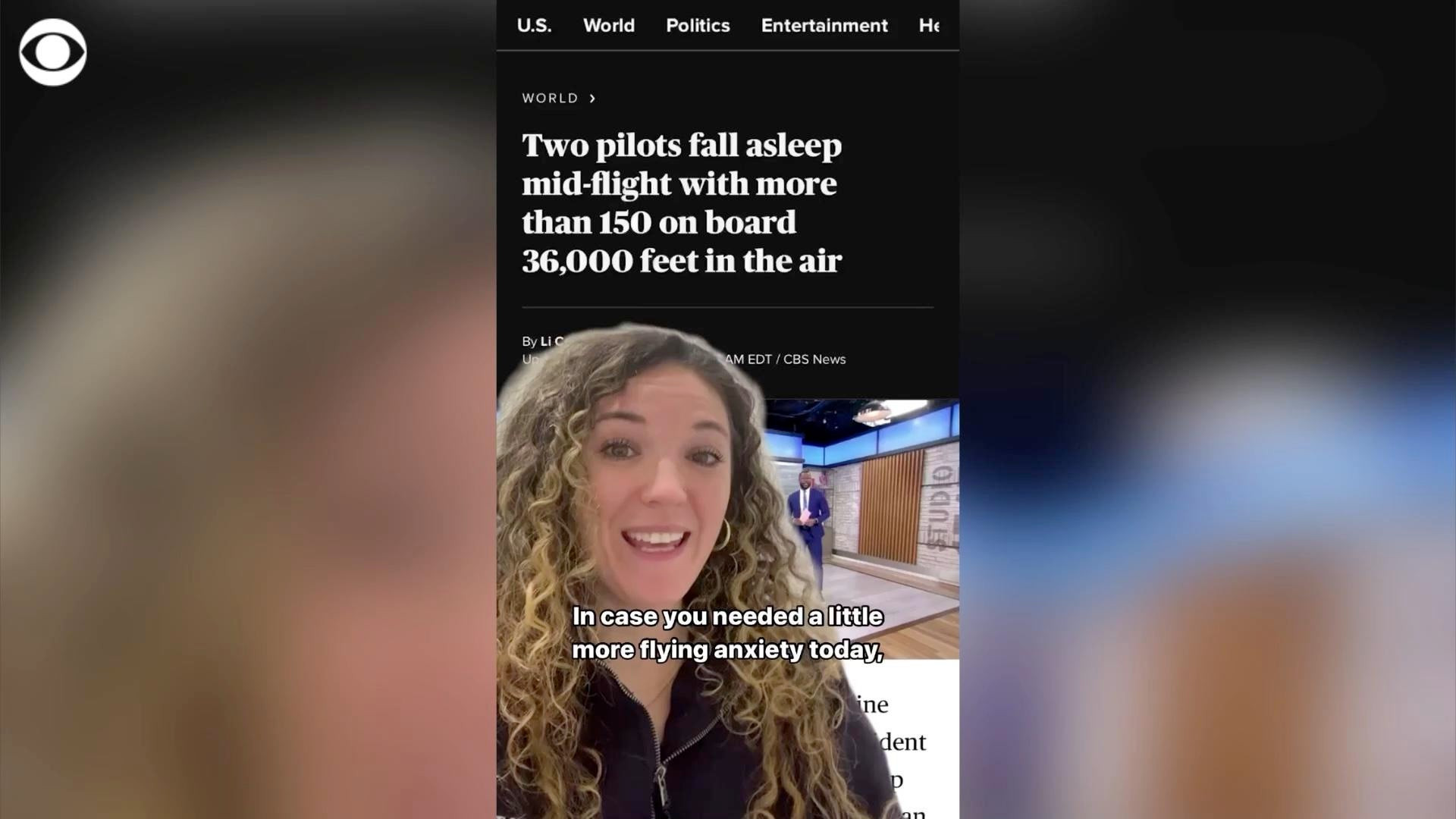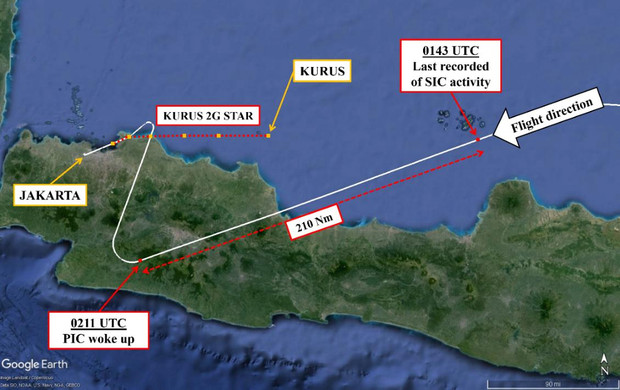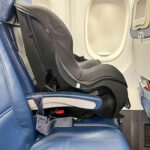Pilots sleeping while flying might sound alarming, but it’s a complex issue with crucial safety measures in place. At flyermedia.net, we delve into the realities of pilot fatigue and the regulations designed to keep air travel safe, exploring how pilots manage rest on long flights. Keep reading to learn more about the role of cockpit resource management, controlled rest, and aviation safety regulations.
1. Is It Possible for Pilots to Sleep During Flights?
Yes, it is possible for pilots to sleep during flights, specifically on long-haul flights. This practice is known as controlled rest in the cockpit (CRIC) or cockpit rest, and it is regulated to manage pilot fatigue and maintain safety. Airlines and aviation authorities implement strict guidelines and procedures to ensure that at least one pilot remains alert and in control of the aircraft at all times.
Controlled rest is permitted only during the cruise phase of long flights, not during critical phases like takeoff or landing. The sleeping pilot is usually allowed a nap of around 20-45 minutes. Before a pilot takes a rest, the other pilot must be fully alert and capable. They’ll also discuss the plan with the cabin crew. During this time, the autopilot is engaged, and the non-resting pilot closely monitors the aircraft’s systems and flight path. This ensures that the aircraft remains on course and any potential issues are addressed immediately.
2. What Does the FAA Say About Pilots Sleeping?
The Federal Aviation Administration (FAA) has specific regulations and guidelines regarding pilot rest and duty times to prevent fatigue. While the FAA doesn’t explicitly permit or ban “sleeping” in the cockpit, it acknowledges the practice of controlled rest and sets rules to manage pilot fatigue effectively.
Key points from FAA regulations include:
- Flight and Duty Time Limits: The FAA sets limits on how many hours a pilot can fly within a certain period. This is to prevent exhaustion from long work hours.
- Rest Requirements: Pilots must have a minimum amount of rest before starting a flight. This ensures they are fit to fly.
- Fatigue Risk Management Systems (FRMS): Airlines use FRMS to identify and mitigate risks related to pilot fatigue. This can include scheduling changes or monitoring pilot alertness.
- Controlled Rest: Although not explicitly defined, the FAA recognizes controlled rest as a strategy within an FRMS, provided it is managed safely.
- Fitness for Duty: Pilots are required to self-assess their fitness for duty before each flight. They must report if they’re not feeling well or are too tired to fly.
While there’s no direct FAA rule that says pilots can sleep, their rules on rest and fatigue management allow for controlled rest. Airlines must have plans to manage fatigue, and pilots must be fit to fly.
3. How Do Pilots Manage Fatigue on Long Flights?
Pilots use various strategies to manage fatigue on long flights, ensuring they remain alert and capable throughout the journey. These strategies include:
- Controlled Rest in the Cockpit (CRIC): This involves planned, short naps taken during less critical phases of the flight.
- Proper Scheduling: Airlines schedule flights to allow sufficient rest periods between flights. This helps pilots recover and reduce cumulative fatigue.
- Crew Resource Management (CRM): CRM training teaches pilots how to communicate effectively and support each other. This includes recognizing and addressing fatigue-related issues.
- Nutrition and Hydration: Pilots maintain a healthy diet and stay hydrated to sustain energy levels.
- Exercise: Regular physical activity helps improve sleep quality and reduce fatigue.
- Caffeine: Caffeine can be used in moderation to increase alertness, but pilots avoid excessive consumption to prevent crashes.
- Monitoring and Self-Assessment: Pilots continuously monitor their alertness and mood and self-assess their fitness for duty before and during flights.
- Adequate Sleep Before Flights: Prioritizing sufficient sleep before duty is crucial.
 Pilots in the cockpit of an aircraft
Pilots in the cockpit of an aircraft
The aviation industry recognizes fatigue as a significant safety risk. Airlines and regulatory bodies implement these strategies to mitigate fatigue and ensure the safety of passengers and crew.
4. What Happens If Both Pilots Fall Asleep?
While extremely rare, if both pilots were to fall asleep during a flight, the consequences could be severe. Modern aircraft have systems to mitigate such situations:
- Autopilot System: Aircraft are equipped with sophisticated autopilot systems that can maintain the flight path, altitude, and airspeed. This system can keep the plane flying safely for a while, even if the pilots are unresponsive.
- TCAS (Traffic Collision Avoidance System): TCAS is designed to prevent mid-air collisions. It alerts pilots to nearby aircraft and provides guidance on how to avoid them.
- Ground Control Monitoring: Air traffic controllers monitor the flight path of aircraft and can detect if a plane deviates from its intended route. They will attempt to contact the pilots.
- Emergency Procedures: Aircraft have emergency procedures that can be activated if the pilots are unresponsive. These procedures can include setting the plane on a stable course and alerting ground control.
In a real-life incident, two pilots of an Indonesian airline fell asleep during a flight with over 150 passengers. The plane veered off course, but the pilots woke up and corrected the flight path. No one was hurt, and the plane landed safely. This incident highlights the importance of fatigue management and safety protocols.
5. How Common Is Pilot Fatigue, and What Are the Risks?
Pilot fatigue is a significant concern in the aviation industry, and its prevalence and associated risks are closely monitored. Studies and reports indicate that fatigue is relatively common among pilots, especially on long-haul flights and those with irregular schedules.
- Prevalence: The European Cockpit Association found that more than 60% of European pilots reported experiencing fatigue.
- Causes: Irregular work hours, long duty periods, insufficient rest, and sleep disorders contribute to pilot fatigue.
- Risks: Fatigue can impair cognitive and motor skills, leading to errors in judgment, reduced reaction time, and decreased situational awareness.
- Safety Impact: The National Transportation Safety Board (NTSB) has cited fatigue as a contributing factor in numerous aviation accidents and incidents.
- Mitigation: Airlines implement fatigue risk management systems (FRMS) to identify and mitigate fatigue-related risks. These systems include scheduling policies, rest requirements, and pilot education.
Pilot fatigue poses a risk to aviation safety. Airlines and regulatory bodies take steps to mitigate these risks, such as enforcing rest periods and using technology to monitor pilot alertness.
6. What Regulations Are in Place to Prevent Pilot Fatigue?
Aviation authorities worldwide have established regulations to prevent pilot fatigue and ensure flight safety. These regulations focus on limiting flight hours, mandating rest periods, and implementing fatigue risk management systems (FRMS).
- FAA Regulations (USA): The FAA sets limits on flight and duty times and requires minimum rest periods for pilots.
- EASA Regulations (Europe): The European Union Aviation Safety Agency (EASA) has similar regulations, including flight time limitations and rest requirements.
- Flight Time Limitations (FTL): These rules restrict the number of hours a pilot can fly within a given period.
- Rest Requirements: Pilots must have a minimum amount of rest before starting a flight.
- Fatigue Risk Management Systems (FRMS): Airlines use FRMS to identify and mitigate risks related to pilot fatigue.
- Reporting Systems: Pilots are encouraged to report fatigue-related incidents without fear of reprisal.
- Education and Training: Pilots receive training on fatigue management strategies and how to recognize and report fatigue symptoms.
 Interior view of an airplane cockpit
Interior view of an airplane cockpit
These regulations are designed to ensure that pilots are well-rested and alert, reducing the risk of fatigue-related errors and accidents.
7. How Does Crew Resource Management (CRM) Address Fatigue?
Crew Resource Management (CRM) is a critical component of aviation safety, focusing on effective communication, decision-making, and teamwork within the flight crew. CRM plays a significant role in addressing and mitigating the risks associated with pilot fatigue.
- Communication: CRM training emphasizes open communication among crew members. Pilots are encouraged to report fatigue symptoms without fear of reprisal.
- Situational Awareness: CRM helps pilots maintain situational awareness, including recognizing signs of fatigue in themselves and others.
- Workload Management: CRM teaches pilots how to distribute workload effectively, reducing individual stress and fatigue.
- Decision-Making: CRM promotes collaborative decision-making, ensuring that decisions are based on input from all crew members.
- Error Management: CRM emphasizes the importance of identifying and correcting errors, including those caused by fatigue.
- Leadership: CRM training provides pilots with the skills to lead effectively, including recognizing and addressing fatigue-related issues within the crew.
- Mutual Support: CRM fosters a culture of mutual support, where crew members look out for each other and provide assistance when needed.
By promoting effective communication, situational awareness, and teamwork, CRM helps pilots manage fatigue and reduce the risk of errors caused by fatigue.
8. What Technologies Are Used to Monitor Pilot Alertness?
Several technologies are being developed and used to monitor pilot alertness and detect fatigue in real time. These technologies aim to provide early warnings and prevent fatigue-related incidents.
- Eye-Tracking Systems: These systems monitor eye movements and blink rate to detect signs of drowsiness and fatigue.
- Brainwave Monitoring (EEG): EEG technology measures brainwave activity to assess alertness levels.
- Performance Monitoring: This involves tracking pilot performance metrics, such as reaction time and accuracy, to detect cognitive impairment.
- Physiological Sensors: Sensors can measure heart rate, skin conductance, and other physiological indicators of fatigue.
- Software Algorithms: Sophisticated algorithms analyze data from various sources to detect patterns associated with fatigue.
- Smartwatches and Wearable Devices: These devices can track sleep patterns, activity levels, and other data relevant to fatigue.
- Cockpit Voice Recorders (CVR): While not directly monitoring alertness, CVRs can provide insights into crew communication and potential fatigue-related issues.
These technologies offer promising tools for monitoring pilot alertness and mitigating the risks associated with fatigue. As technology advances, these systems will become more sophisticated and reliable.
9. Can Passengers Help Prevent Pilot Fatigue?
While passengers don’t have direct control over pilot scheduling or rest policies, they can play a role in promoting a safe and respectful environment that indirectly supports pilot well-being. Here’s how:
- Respect Flight Crew: Treat pilots and flight attendants with respect and courtesy. A positive and supportive environment can reduce stress and improve crew morale.
- Follow Instructions: Pay attention to and follow instructions from the flight crew. This helps maintain order and safety on board.
- Report Concerns: If you observe anything that concerns you about a pilot’s behavior, such as signs of impairment or extreme fatigue, report it to a flight attendant or airline staff.
- Support Airline Safety Initiatives: Support airlines and industry organizations that prioritize pilot rest and fatigue management.
- Advocate for Safety: Encourage regulatory bodies and airlines to implement and enforce strong fatigue management policies.
- Be Understanding: Recognize that flight delays and schedule changes can sometimes be necessary for safety reasons, including ensuring adequate pilot rest.
- Promote Awareness: Help raise awareness about the importance of pilot rest and fatigue management among friends, family, and colleagues.
By being respectful, attentive, and supportive, passengers can contribute to a safer and more positive environment for flight crews, indirectly promoting pilot well-being and reducing the risk of fatigue-related incidents.
10. What Should You Do If You Suspect a Pilot Is Fatigued?
If you suspect that a pilot is fatigued, it’s crucial to take appropriate action to ensure the safety of the flight. Here’s what you should do:
- Notify a Flight Attendant: The first step is to discreetly inform a flight attendant about your concerns. Provide specific details about what you observed that led you to suspect fatigue.
- Provide Specific Information: Be as specific as possible when describing your observations. For example, mention if the pilot appeared disoriented, had difficulty communicating, or showed other signs of impairment.
- Remain Calm: It’s important to remain calm and avoid causing panic among other passengers. Let the flight attendants handle the situation.
- Trust the Crew: Trust that the flight crew will take your concerns seriously and take appropriate action. They are trained to handle such situations.
- Follow Instructions: Follow any instructions given by the flight crew or airline staff.
- Document Your Observations: If possible, document your observations in writing as soon as possible after the flight. This can be helpful if further investigation is needed.
- Contact the Airline: You can also contact the airline after the flight to report your concerns. Provide them with the flight number, date, and details of your observations.
- Report to Aviation Authorities: If you feel that the airline did not adequately address your concerns, you can report the incident to aviation authorities such as the FAA in the United States or EASA in Europe.
Remember, it’s always better to err on the side of caution when it comes to safety. If you suspect that a pilot is fatigued, take action to report your concerns and ensure the well-being of everyone on board.
Flyermedia.net is your go-to source for all things aviation! We cover flight schools, aircraft maintenance, aviation news, and career opportunities. Our information is accurate and up-to-date, so you can be sure you’re getting the best information. Explore our website today and discover the world of aviation!
Are you ready to take your passion for aviation to new heights? Visit flyermedia.net today to explore a world of opportunities! Discover top-rated flight schools, stay updated with the latest aviation news, and find the resources you need to launch your dream career in the skies. Your journey starts here! Find us at 600 S Clyde Morris Blvd, Daytona Beach, FL 32114, United States or call us at +1 (386) 226-6000.
